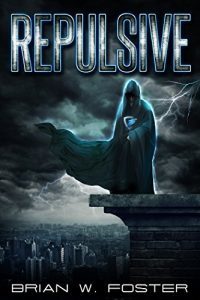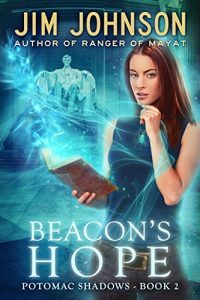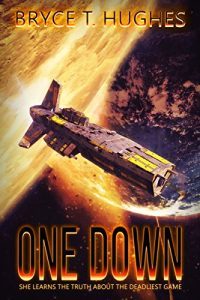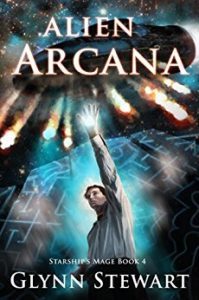Cora Buhlert's Blog, page 94
November 25, 2016
Ruminations on the series finale of Mad Men or The world’s longest Coke commercial
In retrospect, I guess we all should have known better than to expect that Matthew Weiner would be able to come up with a decent ending or indeed any ending at all. After all, the TV show Weiner worked on before Mad Men, The Sopranos famously ended with a bell ringing and a cut to black, while “Don’t Stop Believing” by Journey plays, an oddly appropriate song for the master of unsatisfying endings, because just like a Matthew Weiner TV show, “Don’t Stop Believing” builds and builds towards a climax that never comes (and it’s even cut off in mid line in the Sopranos scene).
I never got into The Sopranos. I intensely dislike mafia stories and besides, I was disappointed when the hot new TV show from the US that had won all the awards turned out not to be about opera singers, as I had assumed based on the title in those days of limited internet. I think I watched maybe half an episode and that was it.
However, to my own surprise, since prestige TV shows that arrived with huge accolades from the US usually do very little for me, I found myself quite drawn into Mad Men, sticking with the show even as the German broadcaster shuffled it into ever more ridiculous graveyard slots (for my previous ruminations on Mad Men, see here) until the very last episode, which aired on German TV yesterday night.
I’m not even sure why I found myself so drawn into Mad Men, since I don’t particularly care for most retro television shows. And besides, Mad Men was frustrating much of the time from the very first episode on. I guess a big part of it was that the meticulously recreated 1960s setting appealed to the design buff in me, particularly in the latter seasons as the show moved into the cool half of the sixties. Another part was that I found all the bits about advertising and how it’s created really fascinating. And indeed, Mad Men would have been a better show IMO, if there had been more advertising and less soap opera antics involving the characters’ home lives, though gawking at the clothes and set design made even the annoying soap opera elements endurable.
Finally – and yes, sometimes I am that shallow – I kept watching, because I wanted to see, if Don and Peggy would finally end up together or at least share a night of red hot passion, because damn it, Jon Hamm and Elizabeth Moss had such a lot of chemistry and generated enough sparks to power the entire studio in every scene they shared.
In short, I was waiting to see if after the succession of Barbie dolls he married and slept with, Don would finally realise that what he really wants is a Midge. And yes, I did some searching around to find photos of vintage Barbie dolls that look just like Mad Men characters. Come to think of it, maybe that was another reason I kept watching Mad Men, because the fact that many characters looked like vintage Barbie dolls appealed to the former doll collector in me.
Anyway, for all us Don/Peggy shippers (I can’t have been the only one, can I?), we now know how that turned out.
To be fair, I actually think that Peggy is much better off with Stan, because Stan is solid and dependable, while Don is flakey and unstable and something of a jerk. Nonetheless, that was not what the story was building towards. Besides, it’s also telling that Stan’s declaration of love comes right after Peggy gets off the phone with Don and has clearly decided that she’s had enough of Don and his antics for good (and frankly, one of my predictions for the ending was “Peggy is finally fed up with Don and pushed him out of the window – hence the falling man in the title sequence”). Poor Stan is the consolation prize – she even tells him, “Oh, I never thought about you at all.”
It’s not even the first declaration of love Peggy has gotten over the course of the series – in fact, there are several moments where confused male Sterling Cooper employees fall to their knees in front of Peggy (sometimes literally) to declare their undying love, sort of. Pete Campbell, Duck Phillips, Michael Ginsberg, Ted Chaough, even Don himself (twice, including one time while he’s telling her he just married Megan) have all done it. Stan is just the last in a long line and the only one who gets a positive answer. Come to think of it, this isn’t even the first time Peggy has decided she’s had enough of Don and turned to someone else. She did pretty much the same thing with Ted Chaough.
So while I’m glad that at least Peggy got to have a happy ending with Stan (who’s a far better choice than Pete, Ted or – heaven’s beware – Duck) and the declaration of love via the phone scene itself is lovely, this still doesn’t really feel like a happily ever after to me.
Though Peggy at least gets an optimistic ending that sort of makes sense in conjunction with what has gone before, which is more than you can say for many of the other characters. Because while the last seven or eight episodes were basically an extended good-bye tour, where established characters reappeared, only to announce they were going off somewhere else – and we should give Matthew Weiner credit for at least attempting to give his characters closure – a lot of these fates did not ring true.
Let’s start with the company at the heart of Mad Men, Sterling Cooper and Partners or whatever it was called at the end. The company finally gets gobbled up by McCann Erickson, a fate Sterling Cooper has alternately courted and tried to avoid since the very first season, and dissolved. And for that matter, what on Earth has McCann Erickson, which is after all a real company existing in the real world, ever done to Matthew Weiner to make him hate them so much? Because frankly, as a writer I’d feel very uncomfortable (not to mention skirting a defamation lawsuit) having my character say the sort of things Mad Men characters repeatedly say about McCann Erickson about a real company. Though I suspect McCann Erickson doesn’t care and is laughing all the way to the bank, pleased about their increased profile. For example, before Mad Men I had no idea which company was responsible for all those lovely Coca Cola ads (and they are lovely, though I don’t even drink cola). Now I know.
Regarding the characters, I can almost buy that deeply closeted gay Bob Benson would go off the Detroit to work for some American car manufacturer or other, though I still suspect that Bob would have been much happier in New York City with its burgeoning gay pride movement (the Stonewall riots happened in 1969, i.e. about a year before the end of Mad Men). And yes, I know that New York City was considered in decline and crime ridden by the 1970s and 1980s and therefore no longer viewed as the place to be, so apparently to Americans, the characters getting the hell out of there is a happy ending. But if New York City is about to decline, Detroit is about to decline a whole lot worse.
Glenn Bishop suddenly finds patriotism and goes off to Vietnam, which is completely opposite to the earlier portrayal of his character. Roger Sterling suddenly deciding to move to Paris and get married to Megan’s mother of all people? Okay, so the scenes with the two of them were cute and it’s a good sign that Roger has finally decided to marry a woman his own age, but I still don’t buy it. I also think a Roger/Joan reunion would have been a better ending, especially since both are free now and even have a kid together.
But Pete Campbell who loves New York City so much that he cannot even tolerate living in the suburbs (not that I don’t sympathise) suddenly declaring his undying love for Trudy, on whom he cheated even on the eve of their wedding ten years before, and going off to Wichita in fucking Kansas? Yeah, right. I predict he won’t last six months, before he comes back screaming. Never mind that pretty much the last line he speaks on screen is a Terminator-like “I’ll be back” to Peggy.
Meanwhile, Ken Cosgrove gets fired, goes to Dow Chemical to take over the job of his father-in-law (who prophetically is played by Ray Wise) and promptly turns into a raging arsehole. Not only does that ending not ring true, it’s also a sad fate for someone who was one of the few likeable male male characters in Mad Men. Especially since he doesn’t go to work for any old corporation, but for one that is pretty close to the epitome of the evil big corporation (Napalm, Agent Orange, Bhopal, faulty breast implants and plenty of other scandals). Honestly, I’d much rather have seen Ken retire to become a full time writer, which his wife actually suggests to him at one point. Especially since Ken, Mad Men‘s resident SF writer, always struck me as an amalgam of several real life SF writers who worked in advertising for their day jobs. In short, I’d hoped Ken would turn into Frederik Pohl and not the nasty big corporation’s spokesperson.
Going on to final fates of Mad Men characters that do ring true, there is Betty and her impending death of lung cancer. Now I have to admit that I loathed Betty from the very first moment I saw her. This has nothing to do with the actress whom I have liked in other roles, it’s simply that Betty is a horrible person. In fact, I strongly suspected that we were supposed to loathe Betty, which is why I was very surprised that a lot of people did not loathe her at all, but felt sorry for her. Yeah, Don is a jerk and a complete failure as a husband, but since Betty was so unlikeable, it was hard to have any sympathy for her at all. Plus, any appearance by her always dragged the series into soap opera territory, especially when she continued playing a big role in the series even after she divorced Don and should in theory have been written out, much like Megan and most of Don’s various flings were.
So while it is of course tragic that a woman of barely forty and mother of three young children would die of lung cancer, I still found it incredibly hard to muster sympathy for either Betty or Henry, her equally loathsome second husband (who always looks like someone who’d molest his step children, plus he’s a Republican, which does not endear him to me barely two weeks after the US election). I do feel sorry for Sally, Bobbie and Gene (and it doesn’t help that Kiernan Shipka, who plays Sally, acts rings around much of the adult cast) and how Sally and later Bobbie desperately try to cling to normalcy for the sake of their mother, stepfather and little Gene, but not for Betty herself. Though Betty refusing treatment (even though chemotherapy was around in 1970, much to my surprise, since my biological grandmother who died of breast cancer in 1968 did not get any as far as I know) and the fact that her final requests to Sally focus only on what she wants to wear in her coffin and how she wants her hair done, actually do ring true to the way the character has been portrayed throughout the series (and kudos to actress January Jones who’s excellent in these final few episodes).
Her final phone call with Don didn’t do much to endear Betty to me either, since she tells Don point blank that she doesn’t want the children living with him, because children need a normal family with father and a mother (I bet if she’d lived, Betty would have become a fervent anti-gay marriage crusader along with creepy Henry). Now Don really isn’t about to win any “father of the year” awards, but in many ways, he’s a pretty typical absent father of the postwar era. And in his scenes with the three Draper children, it’s obvious that he’s fond of them (which may well be due to actor Jon Hamm being fond of children), which is why the scene a few seasons ago where Don confesses that he didn’t want his children never rang true, because it was pretty obvious he cared about them. Meanwhile, Betty is not just a horrible person, she has also been portrayed as an awful mother from the very start. Don may not make “father of the year”, but Betty has always been a hot candidate for the prestigious (not) Darth Vader Parenthood Award.
So were we supposed to loathe Betty? Were we supposed to feel sorry for her? Both? I don’t know. All I know is that I feel bad about not feeling sadder at her impending death, because what I see is a deeply unpleasant person meeting a horrible fate. The fact that the series kept almost gleefully pointing out all the smoking and the drinking with a big red arrow that said, “Look at those backward people. They don’t even know they’re killing themselves.” throughout its run doesn’t help either. Someone eventually had to succumb to all that drinking and smoking and Betty was the one who got the short straw. It’s also telling that in her final shot, we see Betty sitting at the kitchen table with a cigarette in her hand. And yes, I know I’m probably not objective regarding Betty, because I keep conflating her fate with my biological grandmother’s (whom I never knew and about whom I have very complicated feelings*) and because she represents the sort of conventional suburban married life I intensely dislike (and she married a Republican, too). So in short, Betty couldn’t win, at least not with me.
When those episodes first aired in the US, I’ve seen quite a few people complain that Betty was fridged, while all the jerky male characters got happy endings. So was Betty fridged? If it had only been Betty dying, I don’t think anybody would have complained, especially since – as I said above – someone had to succumb to all that drinking and smoking and drug taking. However, it wasn’t just Betty. Because women involved with Don Draper have the tendency to die, mostly of cancer. Both Anna Draper and Rachel Katz of the Jewish department store, two women who were important to Don, die as well, both of cancer, while his Beatnik girlfriend from the early episodes becomes a junkie. Don Draper is very much like Lady Mary from that other retro nostalgia TV hit, Downton Abbey. Have sex with them and you die. And in both Anna’s and Rachel’s case, the deaths were entirely unnecessary and typical fridging deaths, far more typical than Betty’s. Anna basically dies to get Don to pour out his heart to Peggy, for all the good that does to anybody, while Rachel (whom we haven’t even seen in several seasons) dies to set Don on his vision quest to find the “real America” or whatever that was supposed to be. And the Beatnik ex-girlfriend gets turned junkie to inspire Don to come up with that “We won’t do any tobacco ads no more” letter. Anna and Rachel both get fridged to motivate the male protagonist or teach him a lesson. Betty… well, I suppose she gets fridged, too, though it’s never really clear which lesson Don is supposed to learn from her death.
In general, I find that while Mad Men is chock full of jerky male characters, a lot of the women are deeply unpleasant, too, particularly the various wives, trophy and otherwise. I’m not sure if we were supposed to dislike Trudy Campbell and Roger Sterling’s second wife Jane, but I did. Unlike Betty, I did not actually hate Megan Draper at first sight, but I definitely came to hate her in the end. And that’s very much the fault of the writers, since it’s pretty obvious that the only reason Megan was brought in was that she looked great in the fashions of the late 1960s (and damn it, she did look fabulous – Megan always inspired the sort of wardrobe envy in me that Betty never did). In this house, we called her Twist and Turn Megan, after the 1967 all new Barbie model, which kids could exchange for their old models (see a TV ad about that here and imagine Don Draper created it), cause that’s just what Don did, exchange old model Barbie (Betty) for the new and improved Twist and Turn model (Megan). And once Megan had served her purpose, she was discarded, just like an old Barbie doll, while Don went for Malibu Barbies, quite literally.
So in short, Mad Men‘s woman problem wasn’t so much Betty, it was that all female characters who weren’t Joan or Peggy or the various secretaries were either unlikeable or discarded once they’d served their purpose or both. Note that while we got detailed explanations about what happened to Bob or Ken or Pete, Dawn or Shirley or Meredith were dispatched with a single sentence (and I’m still not sure what became of Dawn).
As I said above, back when the final episodes of Mad Men aired in the US, someone said that all the arsehole men got happy endings, while most of the women got tragic endings. However, having actually watched those episodes, I’d say that hardly anybody in the show gets anything approaching a happy ending.
Just try to look ten or fifteen years forward and imagine where those characters will be: Betty Draper? Long dead. Pete Campbell? Either deeply unhappy in Wichita and divorced from Trudy for the second time or equally unhappy back in New York. Megan Draper? She’ll never be a star, that much is clear, and she’ll probably die of an overdose sooner or later. Bob Benson? Probably dead by 1985, poor guy. Glenn Bishop? Dead or missing in Vietnam, poor kid. Ken Cosgrove? Instead of winning Hugos, he’ll be standing there trying to excuse and explain away Napalm and Agent Orange and Bhopal and all sorts of other scandals that can neither be excused nor explained away, losing a bit of his soul every single time. Roger Sterling? I hope he’ll find some happiness with Megan’s mother, though I suspect he’ll leave her sooner or later. Harry Crane? Still doing the same thing he always was, now at McCann Erickson. Ted Chaough? Who the hell cares?
The only regular characters I suspect will find some measure of satisfaction for Peggy, who’ll likely achieve her career goal of becoming the first female creative director and who has Stan, too, and Joan, who never found love, but who found success in business instead. And yes, it’s very telling that Joan, the very woman who was always seeing her job as a stepping stone for finding a good (i.e. wealthy) husband and not as a career, in the end chose her career over her latest partner and sent Bruce Greenwood packing (which made me cheer), while Peggy, who always wanted a career before a partner, ends up getting both. So let’s hear it for the working women, who braved sexism and wound up getting their own sort of happy endings.
Indeed – looking back over the entire series – my main criticism of Mad Men is that while the show is set in an incredibly cool era of liberation (the 1960s), the characters always default to the conventional choice, if in doubt. Though they are offered chance over chance to be free and live the lives they want to, whatever those are, in the end most of them choose a job with a big corporation (McCann Erickson, Dow Chemical, General Motors, Learjet), marriage to someone who fits the image and a house in the suburbs over whatever it is they really want. Just see the way people who rebel against that sort of life are portrayed. Roger Sterling’s daughter runs away to a hippie commune that is portrayed as dirty and unpleasant, basically one step away from Jonestown and disinherited, too. The copywriter (Paul something or other) who joins the Hare Krishnas (who are also portrayed as only one step away from Jonestown, which does not match the real Hare Krishna movement) and writes an incredibly bad Star Trek script. Megan Draper and her faux Bohemian actress life in Hollywood. Peggy’s photographer ex-boyfriend. Just be a good American, take that corporate job, get married to the right sort of partner, regardless if they are right for you, and move to the suburbs. Live the American Dream and don’t forget to vote for Donald Trump. That seems to be the message of Mad Men. Or is it?
Because as I pointed out, pretty much no one in Mad Men gets a happy ending, even if their individual endings seem happy to them at the time. Besides, the one main character who does not end the series stuck in a corporate job and a marriage with the right sort of partner is none other than our protagonist, Don Draper. Which is somewhat unexpected, since Don had always been the most eager chaser of the American Dream or what he believes it to be. After all, Don was always the one with the stellar career, the house in the suburbs and the penthouse apartment on the Upper West Side. He was always the one who married socially acceptable Barbie dolls, even though he clearly preferred a very different type of woman (older, more mature). Hell, Don Draper even stole another man’s name to get the life he felt he was supposed to want. So it is something of a surprise to see him reject all that in the end. Or does he?
Now I’ve said before that I’ve never found Don’s deep dark secret all that convincing, because I’ve never been able to see just what was so bad about having grown up poor and rural white during the Great Depression that Don felt the need to hide his background. Sure, if he’d been Jewish or Hispanic or African-American passing as white or a transman, then the big secret and identity theft would have made sense. But “I was dirt poor, my Dad was a violent jerk and I grew up in a brothel” aren’t the sort of backstory to make advancement impossible and likely wouldn’t have been in the 1960s either. After all, the Great Depression was only thirty years before, so a lot of people would have come from a background of poverty. Never mind that even today, many people in the US and Europe, including many whites, are only a couple of generations away from abject poverty. For example, while the paternal side of my family has been solidly middle class for several generations, on the maternal side there is abject poverty and homelessness only three generations back. So in short, pretty much everybody comes from a less than ideal background, if you go back far enough, particularly in a nation of immigrants like the US. If anything, the fact that so many Mad Men characters – Roger, Betty, Pete, Bert Cooper – come from generations of wealth is unusual.
And indeed I suspect that the writers noticed that Don’s deep dark secret wasn’t all that shocking, since they kept trying to make it more shocking. The fact that Don spent part of his adolescence in a brothel only showed up (with extensive flashbacks) several seasons in. It never really worked for me, either, because the whole “Don grew up in a brothel” thing relies way too much on the “prostitutes invariably are bad mothers and children of prostitutes inevitable become serial killers or other criminals” trope that I hate with a burning passion. And even though Mad Men tries to paint the whole “grew up in a brothel” thing as a horrible experience for Don, the narrative itself contradicts this again and again, since Don clearly keeps seeking out women who remind him of the prostitutes of his youth.
Again, it seems that the writers got this, so they tried to up the deep dark secret once again by revealing in the penultimate episode that Don believes he killed the man whose identity he stole. Once again, this revelation does not really work, for starters because it happens during an incredibly tasteless scene of unpleasant, drink veterans in Trump country swapping war stories, one of which involves some old dude telling in great detail how he and his war buddies slaughtered and apparently ate a bunch of German soldiers towards the end of WWII. Coincidentally, this isn’t even the only “American veteran talks about murdering evil Other in wartime and how horribly traumatising this was for him” scene I saw last week – there also was a very similar scene in Gotham involving the Michael Chiklis character. Now I know that American writers occasionally fall victim to the “US soldiers are automatically admirable” fallacy (rather than letting audiences from cultures where the military is not as venerated know just why this particular soldier or veteran is admirable). But what precisely is the purpose of these “Wah, I slaughtered a bunch of enemies and now I’m so traumatised” revelations? Do US screenwriters never consider that their works will be watched outside the US, often in the very countries whose citizens were just reduced to evil Others to be slaughtered, so the heroic American soldier can feel traumatised about it? And that “Wah, I slaughtered a bunch of people, but they weren’t Americans, and now I feel bad about it” makes most Non-Americans immediately hate the character in question?
So Don’s revelation that he believes he killed the man whose identity he stole not just happens at a moment, when I for one was still furious at the old guy who murdered the German soldiers who wanted to surrender, it also doesn’t ring true. For starters, Don does’t actually murder the real Don (unlike that old dude from Kansas), he drops his lighter, probbably deliberately, and causes an explosion, which happens to kill the real Don, whereupon our Don steals his identity. Which isn’t a nice thing to do at all, but I don’t believe for a moment that Don wanted to kill the real Don, because that doesn’t fit his character. And besides, if he wanted to kill him, there are easier ways than blowing up both of them. He probably just wanted to get injured, so he could go home.
So in short, Don’s deep dark secret, which wasn’t really all that deep and dark and shocking, was something of a weak link throughout the series. And indeed, when the secret was revealed to someone, the reaction was all too often “Who cares?”, going back all the way to the very first season, where Bert Cooper uttered these very words. And it goes on until the last episode, where Peggy asks Don, “What’s so bad about that?” So maybe the fact that Don’s deep dark secret wasn’t all that shocking to anybody but Don was the point all along?
Coincidentally, the final act of Mad Men begins when Don finally decides to blurt out his deep dark secret at the most inopportune time ever, in the middle of a client meeting. Since the customer in question is Hershey, purveyor of really, really bad chocolate, the scene didn’t quite work as intended in this house, since we basically looked at each other and said, “Wow, Don Draper was so poor when he grew up that he actually thought Hershey’s was good chocolate.” Interestingly, this scene was also the point where Don basically admitted that all the stuff he (and the other Sterling Cooper employees, e.g. Peggy does it, too, talking about the ten year old boy waiting for her at home) tells the clients and the people they’re advertising the products to was lies, nothing but lies.
That scene comes at the end of the penultimate season and leads into the final season, where sadly the writers drop the ball. First, we get several tedious episodes of “everybody hates Don Draper”, including previously likeable characters like Joan or Bert Cooper who don’t really have a reason to hate him. The reaction is also outsized – after all, it isn’t as if Don hasn’t had breakdowns before and they could probably live without Hershey and their dreadful chocolate (though Sterling Cooper in general and Don in particula have always been chasing lower quality products – Don after all declared his preference for Chevrolet instead of Jaguar) . Then, everybody’s attempt to oust Don lead to the whole company being sold to McCann Erickson (which we’ve been told throughout the series is a fate worse than a deal with the devil – honestly, what has McCann Erickson ever done to Matthew Weiner?), which leads to the company being closed and merged, which in turn causes Don to have another breakdown in the middle of a meeting and just run off to go in search of the real America or whatever that was supposed to be. Now Don’s final breakaway might have had more impact, if he hadn’t done that sort of thing before, several times in fact. In fact, Don keeps running off and vanishing only to reappear some time later, all the way back to that weird “hanging with the rich people in California” interlude during the first season, so the impact is somewhat diluted. And indeed, no one except for his latest secretary Meredith (who isn’t particularly bright) is overly worried about Don vanishing, because he keeps doing that sort of thing.
Don, meanwhile, goes on a roadtrip, first in search of the waitress he had a brief affair with, and then in search of the real (white) America, the meaning of life or whatever. As a result, the narrative meanders around for the last couple of episodes. And while Don’s odyssey through rural America might have been charming one or two years ago, right after the US elections they’re difficult to bear, because the people Don meets match every negative stereotype of Trump voters you’ve ever seen. It’s also telling that they’re all white – in a show that has been overly white from the start anyway. The “real Americans” are also jerks, one and all of them, who take his money, exploit him and in one case beat him up. I have no idea if this is the point Weiner wanted to make, but it’s certainly the message I got from those scenes post-US-election.
During his extended roadtrip, Don also sheds the insignia of the company man he used to be. He looses his suit, tie and hat and starts wearing jeans and flanel shirts, he begins to look scruffier, he gives his Cadillac, which he bought during the very first season, to a random teenager he meets en route and gradually reverts to the hobo he once was.
Eventually, Don’s odyssey leads him to California and the doorstep of Anna Draper’s niece Stephanie, who’s played by Caity Lotz, better know to geeky people as Sarah from Arrow and Legends of Tomorrow. Stephanie isn’t pleased to see him (plus, she either gave away her baby or had it taken away), but she takes Don along with her to a hippie retreat on the California coast.
Unlike the hippie commune to which Roger Sterling’s daughter ran away or the ashram where Paul, the copywriter, ended up, the Californian hippie retreat is not portrayed as one step away from Jonestown. Okay, so Don calls them a harmful cult at one point and compares them to the fundamentalit Christianity he encountered as a kid, but compared to pretty much every other variation of either traditional religion or new age spirituality we’ve seen in the series so far, the hippies actually seem pretty harmless. Yes, they are silly in many ways, particularly if you had variations of these exercises and sessions inflicted on you at school (The hippies even had the same bent wood chairs as my old school). But there is no doubt that the hippies are earnest about what they’re doing and that they apparently are helping at least some people, perhaps even Don. Coincidentally, the people at the hippie retreat are also one of the most diverse crowds seen so far in Mad Men. I found it interesting that there were so many older people, since I’d have assumed that places like this tended to skew young.
The head hippie is played by Helen Slater, Supergirl in the 1980s and the adoptive mom of the current Supergirl. Combined with the presence of Caity Lotz, best known as time-travelling undead assassin/superheroine White Canary, and the fact that the other leader of the hippie retreat looks a bit like Vandal Savage, I was briefly wondering whether I was watching a Legends of Tomorrow/Supergirl/Mad Men crossover.
Stephanie runs off after a random hippie woman confronts her about her lost/given away baby. And indeed it’s notable that there is a theme about abandoned children and the screwed up adults they become running through Mad Men, starting with Don himself via Glenn Bishop and his divorced mother, Peggy’s lost baby, the three Draper kids, the baby Megan never wants and eventually loses, the baby Joan never wanted and still decides to keep, Pete and Trudy’s daughter, who is so long awaited and still abandoned, Roger’s daughter who abandons her young son and icily tells Roger, “He’ll survive. I did.”, the neighbour kid who installs himself on Peggy’s couch all the way to Stephanie and her lost baby and the ambivalent feelings she has about that. It’s also interesting that Matthew Weiner was apparently born in 1965, i.e. he is about the same age as Gene, Kevin and Tammy. And in the US, it’s the children of what was eventually called Generation X, i.e. those born in the 1960s and 1970s, who suffered the most from their parents’ divorcing.
I have no idea, if Matthew Weiner’s parents divorced, but he surely knew children whose parents did and probably was terrified that the same thing would happen to his family. Even I knew that fear in far away Germany, even though divorce rates were pretty low when I grew up and we only had two children of divorced parents in a class of 25, a number that is much higher today. But even though we all knew very few people who actually had divorced, every kid I knew was terrified of divorce. So are we watching Weiner dramatising a childhood trauma here for the sake of all children of the 1960s?
One thing that would point towards that explanation is that the 1960s of Mad Men, though meticulously recreated, are no more the real sixties than the 1970s/80s of Life on Mars/Ashes to Ashes (another retro show that gave me the feeling of watching someone’s childhood trauma on screen) are the real seventies and eighties. What we are seeing on screen is a construct, recreated from bits of pop culture, from TV shows and movies, books and magazines and – yes – commercials and ads. That’s why Mad Men shows so many clips from real TV programs and recreates ads for real products. That’s why there are so many references to popular movies and TV programs of the period. That’s why the characters alternately look like Barbie dolls or movie stars. Because what we’re seeing isn’t the real sixties, but a recreation fashioned from childhood memories. By the way, it’s also a fact that people often consider the time just before they were born the most interesting historical period. I was born in 1973, so the late 1960s are incredibly fascinating to me.
Once Stephanie runs away (and also rejects Don’s attempts to help her, the third female member of his family to reject his attempts to help in a single episode), Don finds himself stranded at the hippie retreat. He hugs a random and not very hippie-like guy who feels invisible and like a cog in the machine during one of the group therapy sessions. And then he’s meditating with a bunch of other people on the top of a cliff overlooking the Pacific Ocean (and no, he doesn’t jump) and suddenly breaks out into a big, happy grin. And then there is a cut and we get this:
Yes, it’s a Coke commercial and a very famous one it is, too. And no, Don Draper had nothing to do with it nor was it created on a sunny California clifftop, but at Shannon Airport in foggy Ireland. The person who came up the idea for the spot was a man named Bill Backer, who worked for the real McCann Erickson, and the story behind it may be found here.
Okay, so it’s a great commercial and coincidentally it was the only time while watching the Mad Men finale or indeed Mad Men at all that I got misty-eyed, but then that ad always has that effect on me for some reason (though only as a commercial. The radio version of the song doesn’t have the same effect on me). It’s also telling that the genuine 1971 Coke ad contains more diversity than all seven seasons of Mad Men combined.
So what precisely does this ending signify? Does Don’s grin mean that his misadventures at the hippie retreat have just caused him to come up with the perfect Coca Cola commercial? Or is Don genuinely at peace, while the commercial is just there to remind us that every counter-cultural movement will eventually be appropriated and commercialised by the advertising industry? Though part of what makes the commercial so touching is that the innocence and earnestness feel genuine, as if these lovely colourful hippie kids really think that sharing a bottle of Coke will make everything better.
I guess we’ll never know and Matthew Weiner claims he doesn’t know either. Though my personal head canon is that Don Draper has been held prisoner in the basement of McCann Erickson since 1971 and has been meditating up every Coke commercial since then. The Christmas ad that’s currently running is Don recasting his troubled childhood into the idyll it never was. And yes, those Coke commercials are brilliant. I don’t even like Coke and haven’t had a cola of any kind in twenty-five to thirty years now and Coke ads still make me want to have one, before I remember how the stuff tastes. That’s pretty much the definition of brilliant advertising.
So the question that remains is what precisely was Mad Men supposed to be? An illumination of the advertising industry in the 1960s? A scathing critique of the American Dream and why it’s not a good thing to want? An equally passionate defense of the same? The angry cry-out of the abandoned children of selfish 1960s parents? Matthew Weiner’s attempt to come to terms with a childhood trauma. A combination of all the above?
Or maybe Mad Men really is just the world’s longest Coke commercial?
*It’s still difficult for me to refer to her as my grandmother, because to me she never was that (in my mind, she is “my mother’s mother” and the only reason I no longer refer to her as that is because people don’t get it), since I already had two grandmothers growing up.
 Send to Kindle
Send to Kindle
November 9, 2016
Photos: First Snow of the Winter 2016
And now for something completely different:
Last night, while US voters were busily burning down their country and handing a racist and sexist jerk the presidency, we also had the first snow of the winter.
So if you want to take your mind of depressing US politics, here are some photos:

The view outside my front door this morning. The street is covered in snow.

A look down the snow covered street.

A look up the snow-covered street. Note the frosted trees.

The meadow and the oak tree next to the house all covered in snow.
 Send to Kindle
Send to Kindle
Attention: Rant Incoming
I’m sick of misogynist, homophobic, xenophobic and racist white people.
I’m fucking sick of all those white people (and the overwhelming majority of them are white) who complain that their country of residence is not their country anymore, because now they suddenly have to endure all those other people, women, people of colour, LGBT people, refugees, etc…, entering their space, living in their neighbourhoods, going to school with their children, taking their jobs.
Warning: Rambling rant about Trump, Brexit, the AfD and entitled white people follows:
In recent months, we have been hearing a lot about how cosmopolitan liberal elites has supposedly lost touch with ordinary (white) people and ignore their fears. Because obviously every fear, no matter how irrational, needs to be taken seriously. We’ve been hearing how the media is failing those ordinary people by not representing their point of view – even though we’ve seen rightwing populists expound their views at length in every talk show and news program out there.
We’re constantly being implored that we must listen to those angry white people and their grievances. And you know what? I have listened to them. It’s kind of hard not to, since they’re literally everywhere, including among your neighbours and family, yelling how no one is listening to them. And I’ve come to the conclusion that what these angry white people really are is entitled. They’re practically brimming with entitlement, coupled with the fear that somebody else somewhere may be getting something they think they’re entitled to.
Last year, a brave journalist interviewed some protesters at a Pegida march in Dresden to find out what those people’s grievances were. There were people complaining about broken streetlights not being repaired (and refugees are to blame for that exactly how?), people complaining how their little prince or princess didn’t get into the school they wanted, people complaining about the pension system and so on.
But one old woman in particular stood out. She complained that the refugee home got a brand-new washing machine for free, whereas she had to make do with an old one. Never mind that the washing machine at the refugee home is either a machine donated or the cheapest and crappiest model available at the local big box electronics store. Never mind that refugee homes have one washing machine for twenty or more people to share (and unlike that old woman, I’ve actually been inside a refugee home). Never mind that most refugees come from failed states and outright war zones like Syria, Iraq, Afghanistan, Mali, Eritrea, etc… and have often had their homes bombed to smithereens and lost everything they ever owned. I teach German to refugees and I’ve seen the cellphone photos of houses, businesses, cars, libraries lost in the war. But all that didn’t matter to that old woman. Because here were people getting a free washing machine, while she didn’t get one. That’s pretty much the epitome of entitlement.
And that old woman isn’t the only person who thinks like that. Wherever you look at angry white people, you find a rampant sense of entitlement. Entitlement to good jobs, cheap flats, high pensions, free washing machines. Witness how many voters in former East Germany, France, Britain, etc… switched from voting for far left/Communist parties to voting for far right xenophobic parties. It’s hard to parse, because lots of voters all over Europe apparently did a 180 degree turn ideologically. But to many of those people, it’s not about ideology and has never been. It was about voting for whatever party promised to get them what they feel entitled to, while denying it to the other guy. Just as the fall of the Wall 27 years ago today was less about freedom than about bananas.
A lot of those people talk about returning to some golden age in the past, often the fifties, where things were better and everybody knew their place. But whatever golden age these people want to return to never existed or it existed only for a select few, while it was a stifling conformist hell for everybody else.
I wasn’t alive in the fifties, but I remember growing up in the 1970s and 1980s and believe me, a golden age it wasn’t. I’ve never known a world where people worked the same job at the same company for forty or fifty years. Yes, it apparently still happened to some people, but it was getting increasingly rare even by the 1980s. My father, a middle class engineer, changed jobs and companies seven times in my lifetime and at least once more before I was born, and he was far from the only one. The industrial die-off that so many pundits are lamenting now was already in full swing when I was a kid and teen. Regardless of what Norbert Blüm said, pensions were never secure, which was bleedingly obvious to everybody with eyes. Coincidentally, my Mom who started working in 1958, told me that good jobs were scarce back then, at least for women, and she had to take what she could get. Add to that a stifling atmosphere where everybody who was different in any way was viewed with suspicion, where I was badly bullied at school – by students and some teachers – for being “spoiled” and “bragging”, simply because I was different and had seen a bit more of the world than my classmates.
So yes, I’ve seen your golden age. I’m a straight white middle class girl from a nice middle class family in a semi-rural suburb attending a school that was approx. 90 percent white Germans with the non-Germans mostly white European immigrants. I’ve been there and trust me, it wasn’t golden. And if it wasn’t golden for me, then imagine how much worse it must have been for someone who was LGBT, an immigrant, a person of colour, disabled, etc… Sure, it’s far from perfect today, but still so much better than it was. Is it easy? No, but then it never was.
What irks me most about the angry entitled white people that now things are finally getting better, they want to roll everything back again, whether in the US, the UK, Austria, France, Germany, the Netherlands, Turkey, Russia, Poland, Hungary, Australia, etc… This post isn’t about Trump voters or Brexit voters or AfD voters or Hofer voters or Orban voters or Le Pen voters or Putin supporters or Erdogan supporters, cause at the root they’re all the same, angry and entitled people terrified of the future. These people want to destroy the world for everybody else, just because they cannot hack living in a modern globalised world. They want to retreat into their little monocultural bubbles and want to force everybody else along with them. And I for one am fucking sick of it.
We’ve heard angry and entitled white people whining over and over again how those cosmopolitan liberal elites don’t care about them. It’s a self-fulfilling prophecy, because I find myself giving less and less of a fuck about angry white people and their concerns, even where they have legitimate grievances.
For example, there recently was a report about an initiative to finally close the wage and pension gap between former East and West Germany, because even 26 years after Reunification, wages and pensions in former East Germany are still lower than in former West Germany, which is a bloody outrage, if you think about it. But as I listened to the report, I found that my first impulse was thinking, “Fuck them. Who cares what happens to those AfD and Pegida supporters?” And I felt ashamed, because at that moment I was no better than those nice and progressive Americans who didn’t give a fuck about the victims of hurricane Katrina or the Deepwater Horizon spill on the US Gulf coast, because hey, they’re all racists down there. Never mind that Katrina hit blacks worse than whites and that New Orleans was a vibrant, diverse and LGBT friendly city. Even though I’m fucking angry at Mississippi and Louisiana, the only part of the US where I actually felt at home once upon a time (and Kentucky, too, where I spent a memorable six weeks as a teenager) for voting for that shithead Trump. I also find myself feeling the same sort of resentment towards Dresden, home of Pegida and the city where my grandmother was born on this very day back in 1919. If she’d lived, she’d be 97 today. I’m not sure what she’d made of all this – she had demetia for the last few years of her life and kept forgetting even the fall of the Wall, the gift history decided to give her for her 70th birthday.
All this talk about the alleged divide between the liberal cosmopolitan elites, whoever they may be (I am apparently one of them, though I’ve never felt particularly elitist), and the ordinary people, whoever they may be, is driving a wedge into society, every society. And before you buy into that shit, ask yourself who profits from driving this wedge into society, who profits most from making those most likely to give a damn about poverty and the growing gap between the rich and the poor resent impoverished white people. Hint: It’s the very people who thrive on resentment, the very people who’d just love to dismantle whatever social protections there are left. Once more, poor people of whatever racial and ethnic background will be hit the hardest. But at least for the angry white people among the poor, those who might once have advocated for them might well say, “Fuck that lot.”
I’m angry at Trump voters and Americans in general today, just as I was angry at Europhobic Brits on Brexit day. I’m fucking angry at stupid and entitled white people who would burn down a world that wasn’t perfect, but at least pretty good and getting better, in favour of some imaginary golden age that never existed and will never come back.
I’m also scared, because now that the UK and the US have fallen to the forces of resentment and xenophobia (not to mention Hungary, Poland, Russia, Turkey) the parts of the world where I could imagine going, if things get bad here, has shrunk once again. I’m German, I know all about the rise of the Third Reich and I’ve always had a hypothetical get-out plan at the back of my mind, should things ever go that way again, ever since I was a teen. I strongly suspect I’m not the only one of my generation with such a plan, though most of us don’t talk about it. Things are still okay here at the moment, but we have a federal election coming up next year, a whole lot of angry and entitled white people and a xenophobic far-right party that would take away my livelihood, if they could, currently polling at 10 to 15%. The part of the world where things are good, where I could feel comfortable, even if I wasn’t born there, is steadily shrinking. And while being a Star Wars rebel and blowing up metaphorical Death Stars might have looked romantic and appealing at fifteen, it no longer does at forty.
Still, I fear we have no choice but to fight the forces of resentment and xenophobia, whereever we are. Help and support those who feel threatened and scared. Try to reason with those angry and entitled people that can be reasoned with and ruthlessly cut off those who cannot. Make it very clear that racist, sexist, ableist, homophobic, xenophobic talk is not acceptable. Even if it’s Uncle Bob who’s a swell guy, if he isn’t spouting hateful nonsense. Especially if it’s Uncle Bob.
Of course, if you cut off Uncle Bob, you might quickly find yourself disinvited from Christmas or Thanksgiving dinners, because a lot of people would rather accomodate the crusty old racist than those who refuse to deal with him or her. But ask yourself, are those really people you want to spend time with? Because most of us have long ago learned not to give a flying fuck what people think about us. Uncle Bob, however, he is a raging conformist and he cares. So let him and his ilk know that their racism, their sexism, their xenophobia is not acceptable.
Comments are closed. Angry and entitled white people, be angry and entitled elsewhere.
 Send to Kindle
Send to Kindle
November 7, 2016
New Collection Available: Southern Monsters
Yes, I know that the US is electing a new president tomorrow (actually today, where I am), but elsewhere the world is still spinning on and I have a new release to announce.
It’s another collection of stories to come out of the 2016 July short story challenge. One thing I have noticed during the two July short story challenges I did so far is that certain themes seem to emerge. And for the 2016 challenge, one of those themes was stories about monsters in the Louisiana bayous.
Now stories about monsters in the Louisiana bayous might seem like an odd thing for someone from Germany to write. However, at the age of five I spent almost a year living in Biloxi, Mississippi, because my Dad had a job there, overseeing the building of some ships. I talk a bit more about that in the Afterword/Author’s Note of Southern Monsters.
The time spent on the US Gulf Coast certainly had an impact on me and like everything that was important to me at some point in my life, it sometimes comes out in my writing. And during the July short story challenge, it did.
So if you need some relief from the ongoing election circus, why don’t you pick up Southern Monsters?
Southern Monsters
 Three tales of monsters and terror in the Louisiana bayous.
Three tales of monsters and terror in the Louisiana bayous.
When a young bride goes missing on her wedding day in Acadiana, the locals blame the Terror, the legendary monster that stalks the Crimson Bayou.
Remy Theriault does not believe in the Terror and he’s pretty sure the bride has done a runner. But the groom is his cousin and family is family. So Remy goes out to look for the runaway bride, only to find that sometimes, the old legends are true…
When their car crashes into the bayou on a dark Louisiana night, the swamp creature known only as Big Puffball might just be one family’s salvation…
When fishing boats go missing on the Mississippi River Delta, few people link these disappearances to the mysterious light that lit up the Louisiana sky only weeks before. But an astronomer from Tulane University makes the connection and discovers the horror that is the sphere that ate the Mississippi delta.
More information.
Length: 7700 words
List price: 0.99 USD, EUR or GBP
Buy it at Amazon US, Amazon UK, Amazon Germany, Amazon France, Amazon Netherlands, Amazon Spain, Amazon Italy, Amazon Canada, Amazon Australia, Amazon Brazil, Amazon Japan, Amazon India, Amazon Mexico, Kobo, Barnes & Noble, Apple iTunes, Scribd, Smashwords, Inktera, txtr, Thalia, Weltbild, Hugendubel, Buecher.de, DriveThruFiction, OmniLit/AllRomance e-books, Casa del Libro, e-Sentral, 24symbols and XinXii.
 Send to Kindle
Send to Kindle
November 3, 2016
Introducing the “In Love and War” trailer
Yeah, it’s NaNoWriMo and all that and I really should be writing.
But instead, I found myself creating a trailer for my In Love and War space opera romance series, using a bunch of stock photos and public domain space art and assembling them into a trailer using the free program Stupeflix.
I talk a bit more about my process for making book and series trailers here. Basically, what you need are some stock images and a story to tell. If you’re a writer, you should already have the latter, and if you’re a publisher, you should know where to find the former.
So enjoy the In Love and War trailer. And buy the books, while you’re at it.
In Love and War
For more videos, visit my YouTube channel.
 Send to Kindle
Send to Kindle
October 30, 2016
Indie Speculative Fiction of the Month for October 2016
 It’s that time of the month again, time for “Indie Speculative Fiction of the Month”, this time with a special Halloween edition.
It’s that time of the month again, time for “Indie Speculative Fiction of the Month”, this time with a special Halloween edition.
So what is “Indie Speculative Fiction of the Month”? It’s a round-up of speculative fiction by indie authors newly published this month, though some September books I missed the last time around snuck in as well. The books are arranged in alphabetical order by author. So far, most links only go to Amazon.com, though I may add other retailers for future editions.
Once again, we have new releases covering the whole broad spectrum of speculative fiction. We have a whole lot of horror this month (well, it is Halloween), but also epic fantasy, urban fantasy, portal fantasy, historical fantasy, Asian fantasy, space opera, military science fiction, post-apocalyptic science fiction, Cyberpunk, science fiction romance, fantasy romance, paranormal romance, vampires, witches, monsters, aliens, superheroes, nanotechnology, outlaw hackers, smart bullets, perilous hunts, killer viruses, operatic zombies, Greek gods, barbarian generals, druid genes, Singaporean monsters, a whole lot of LGBT characters and much more.
Don’t forget that Indie Speculative Fiction of the Month is also crossposted to the Speculative Fiction Showcase, a group blog run by Jessica Rydill and myself, which features new release spotlights, guest posts, interviews and link round-ups regarding all things speculative fiction several times per week.
As always, I know the authors at least vaguely, but I haven’t read all of the books, so Caveat emptor.
And now on to the books without further ado:
Once, Anjali Patel and Mikhail Grikov were soldiers on opposing sides of an intergalactic war. They met, fell in love and decided to go on the run together.
Now Anjali and Mikhail are trying to eke out a living on the independent worlds of the galactic rim, while attempting to stay under the radar of those pursuing them.
When a seemingly routine courier job turns out to be a trap, Anjali is hit by a so-called smart bullet, a Republican weapon that slowly and inevitably kills its victims. Mikhail is given a choice by his former commander Brian Mayhew: Surrender or watch the woman he loves die in excruciating pain.
It is a choice between two equally horrifying fates. But maybe, there is a third option…
This is a story of 6200 words or approx. 22 print pages in the In Love and War series, but may be read as a standalone.
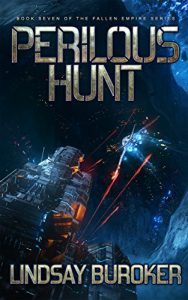 Perilous Hunt by Lindsay Buroker:
Perilous Hunt by Lindsay Buroker:
After failing to catch up with her daughter Jelena so many times, Alisa’s optimism is battered, but her determination has never waned. She, Leonidas, and their eclectic crew are hunting down a Starseer research station in the heart of the Kir Asteroid belt—Jelena’s supposed location. Alisa vows that she will find her daughter if she has to search a million asteroids to do so.
But Jelena and her close friend, Prince Thorian, have attracted the interest of many factions, and the Star Nomad isn’t the only ship on the hunt…
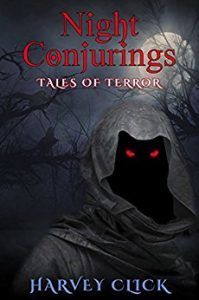 Night Conjurings: Tales of Terror by Harvey Click:
Night Conjurings: Tales of Terror by Harvey Click:
For fans of Clive Barker and Laird Barron… Ghosts, vampires, demons, serial killers, and other deadly denizens of the dark haunt this collection of chilling short stories by horror master Harvey Click.
*An unhappy and unloved boy summons a substitute mother–with sharp teeth.
*Two teenage boys learn it’s better to leave a spooky abandoned house alone.
*Can ghosts kill? Denise is about to find out the hard way.
*When her creative writing instructor offers to teach Kathy how to write a horror story, she finds herself trapped inside one.
*A man discovers he may be a killer, though he can’t remember the murders.
*A man with a terrible past, a wizard from the dark side of the moon, and a pitchfork perform a dark drama of murder and madness.
*A time traveler attempts to bring his dead fiancée back to life.
*Many people wish to be ageless, but what happens when an immortal woman begins to lose her mind?
*An artist literally draws a dead woman out of her grave.
*An elderly woman seeks to recover her forgotten past, but some things are better left forgotten.
*A petty swindler tries to buy good luck but ends up with the sort of luck nobody would want.
*And finally, a brief fable about a box of very sharp silence.
Anna was a psychologist before the world ended. Now, she’s just a member of the not-yet-dead, waiting out the days until sickness takes her. But when an indecipherable signal from the depths of the sea hints at hope, she goes along on a mission to discover its source. She’s supposed to keep the rest of the crew sane, and they’re supposed to keep her alive. But not everything goes as planned…
Will the secrets of the deep hold hope for the future of the human race? Anna’s adventure to discover the truth begins.
 Monster Maelstrom – A Halloween Anthology, edited by George Donnelly
Monster Maelstrom – A Halloween Anthology, edited by George Donnelly
24 Extremely Short Halloween Stories for your Briefest Moments
From a Hillary Clinton stripper to mythical beast-women in the harsh Scandinavian tundra and from an unusual band of steadfast teddy bears to the last man in zombie-occupied Chicago, fill your briefest moments with pulse-pounding frights and off-beat chuckles with this collection of 24 flash fiction stories.
Commuting to work? Grabbing a quick coffee? Each story tells a complete tale in but a few short minutes with the added promise of a lifelong introduction to new indie writers.
You never know, you might just find your next favorite author.
Monster Maelstrom, the second anthology in the Flash Flood series, is a hand-picked selection of master works in humor, horror and fantasy themed for Halloween and guaranteed to keep you engaged.
Sign up now to get free copies of book 1, Bite-Sized Stories, and future flash fiction anthologies themed for Christmas, Valentine’s Day, May the 4th and Independence Day.
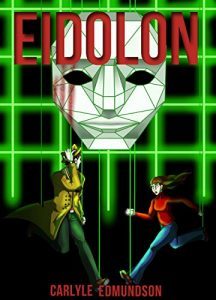 Eidolon by Carlyle Edmundson:
Eidolon by Carlyle Edmundson:
After Lance’s contact, Wyatt, is driven underground by the followers of a crusading hacker known only as Eidolon, Lance gets saddled with the unenviable task of digging up dirt on them—one made even less tolerable as he finds himself working alongside a clickbait blogger whose only concern is the next big controversy.
But as Lance gets to know Eidolon and what he stands for, he becomes less and less sure that he’s on the right side. Is Wyatt merely taking advantage of him, or could there really be a dark secret at the heart of Eidolon’s attempts to right the world?
Eidolon is the second book in the Lance Canela series, following The Arcology. It features a special bonus short, Thoughts as Gray as Ash.
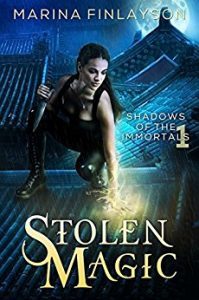 Stolen Magic by Marina Finlayson:
Stolen Magic by Marina Finlayson:
Lexi Jardine may be a thief, but she’s not stupid. When a crooked fireshaper wants her to steal a ring from the boss of his order, she knows it’s a one-way ticket to sleeping with the fishes. Her answer is to drop off the face of the earth.
Safely hidden in a quiet seaside town, she just needs to keep her head down and pretend to be a regular human. Since her only magical ability is the power to control animals, that should be easy, right?
Then a new fireshaper shows up in town. He’s hot as hell but oddly hostile. With his suspicious eyes watching her every move, her safe haven starts feeling more like a trap. When her best friend disappears, Lexi knows the time for hiding is over. Though the fireshapers are more powerful, Lexi’s not one to abandon a friend—but it will take everything she’s got to save them both from the flames.
 The Druid Gene by Jennifer Foehner Wells:
The Druid Gene by Jennifer Foehner Wells:
Darcy has a ten-thousand-year-old secret buried in her genetic code.
As a second year medical student, her life revolves around classes, studying, and her boyfriend Adam—until she treks through the desert, touches some mysterious stacked stones, and a network of glowing blue lines radiates under her skin.
Then she saw the spaceship. And it was coming for her.
She faces impossibly bad choices and a missing boyfriend.
Darcy struggles to accept her heritage and master her newfound powers as she navigates deception, betrayal, and danger in order to prevail in the galaxy’s most dangerous game—and survive to save Adam.
This new series also takes place in the Confluence Universe.
Zack Zurick loves superheroes. Lives them. Knows everything about them. And hey, he is a classic underdog and has an alliterative name, so maybe he could one day be chosen to join their ranks.
His life drastically changes when he becomes Repulsor. He’d hoped the fame and money would make Hayli see him as more than a friend. Instead, she can’t even look at him without literally getting sick. And the whole saving-the-world thing turns out to be harder than he thought, too. The villains have teamed up, and the heroes have a traitor in their midst. Zack must figure out who’s betraying them, defeat the bad guys, and, oh yeah, not get killed.
Right. Why not just go ahead and win the girl while he’s at it?
Maybe he could. If she weren’t dating the most popular, most famous, and most handsome superhero of them all. And if only he weren’t … Repulsive.
 Mind Behind the Mind by Alexa Grave
Mind Behind the Mind by Alexa Grave
A witch who believes one of her own kind could never kill…
In a world where people believe the crimson sun is a dead witch’s head and the witch hunter who killed her stalks the night sky, a witch who ventures outside of Haven risks losing her life. Tessa is one such witch. Like many of her kind, she hopes to help the people of Leera, not harm them, and she’s on her first mission to heal an ailing man named Jeremiah. But when she crosses paths with a witch hunter, instead of avoiding him like she knows she should, she succumbs to her desires and ends up in his bed.
The local Enforcers believe a witch is behind Jeremiah’s sickness, so they call Bastian to town. He’s a young witch hunter who normally has a knack for sniffing out witches. But when he runs into the striking Tessa, she scrambles his senses. He’s inexplicably drawn to her and abandons his usually cautious nature.
As Tessa and Bastian uncover clues about Jeremiah’s illness, Tessa has to face the possibility that another witch may have had a hand in the incident. And if Bastian learns she’s a witch, he may point his finger at her. Then her head will surely roll.
 The Tyro by Carol Holland March:
The Tyro by Carol Holland March:
Larreta, home of the dreamwalkers, is being torn apart.
Rifts are forming and swallowing everything in their path. People, structures, entire villages, are disappearing. No one knows where the rifts come from or how to stop them. And they are getting worse.
Leo, a Senior Dreamwalker, is recalled from Earth, where he fled rather than face his failures. His heightened ability to connect with the past is crucial to combat the rifts. He’s drafted to train a handsome new dreamwalker, Jesse: a young man whose own talents are part of the solution to stopping the destruction.
Together, the two must form a complicated passage through time and space, and they can only succeed with mutual trust. First, Leo needs to overcome his personal demons in order to make the necessary connection. But getting closer is not something he wants to do, in spite of his attraction to Jesse. However, the fate of more than one world rests on their success. And time is running out.
 Extinction Cycle: From the Ashes by Michael Patrick Hicks:
Extinction Cycle: From the Ashes by Michael Patrick Hicks:
n an effort to contain the spread of the Hemorrhage Virus, the United States government launched an attack on its nation’s cities. Hundreds of thousands of lives, and a number of major cities, were lost in Operation Reaper but the monsters created by the bioengineered virus remained.
A small team of Army Rangers have entered the ruins of Detroit in an effort to save whatever refugees they can, and stop whatever creatures they encounter. In an all-or-nothing gambit, the Rangers will soon discover that in the heart of the Motor City, evil rises from the ashes.
 All Roads Lead to Hell by S. Hunter Nisbet and Artemis Fay:
All Roads Lead to Hell by S. Hunter Nisbet and Artemis Fay:
Good intentions only go so far.
Regretting his decision to let Simon Flaherty leave Buchell without admitting his feelings, Mick Perry follows his ex-fighting student to Scioto City looking for closure.
What Mick finds is a teenager barely coping with his new life, adrift in a metropolis that pays lip service to progress while accepting bribes from all-powerful criminal syndicates.
Mick thinks he’s prepared to do anything to help Simon, but his own past is catching up, from the family that betrayed his beliefs to the war he can’t seem to stop fighting in his dreams. Not to mention the contracts he’s bent on securing with the city bosses. The right move forward has never been less clear.
When the local syndicates realize exactly who Simon’s father was, all bets are off for the future. Mick will have to choose—does he want Simon as a lover, or does he want to use the power of the Petrowski name?
Or do all roads lead to hell?
When Rachel Farran accepted her calling to become a new Beacon, a reborn Fate and weaver of ley magics, she barely understood the world she was diving into. Lost souls, poltergeists, an ancient magical journal, and more await her in her journey, and she has to balance all of that with time for her girlfriend, training her magical ally Malcolm, and oh yeah, also trying to find a job to help make ends meet. It’s enough to make a girl go crazy!
Beacon’s Hope is the second book in Potomac Shadows, a paranormal fantasy series set in the Washington, D.C. metro area.
 The Keeper of Pulau Purba by Brian J.W. Lee:
The Keeper of Pulau Purba by Brian J.W. Lee:
From an emerging writer in Singapore, a Military-Horror Novel just in time for a harrowing Halloween.
Alex Kee is an author. As he is working on his magnum opus, he is called up for military reservist duties. At 35 years old, this is far from the first time he is doing this – Except he has been transferred to a new branch of the military camped at Pulau Purba, a previously undeveloped island south of Singapore.
Unable to write, he finds solace instead in his old army buddies. The closest amongst them is Nur Aidah, who is voluntarily serving despite the law requiring only men to do so. While old wounds are reopened, new ones emerge:
Alex finds that there is something wrong with Pulau Purba. The soldiers stationed there are tense even by conscript standards. Anger boils in the hearts of many and violence is common. Meanwhile, a grotesque creature stalks Alex in his sleep. Although he suspects that he isn’t alone, no one talks about it.
A thunderstorm’s coming, and it will threaten everything that Alex holds dear.
 Aizli: Between Worlds by Lindsay McKinney:
Aizli: Between Worlds by Lindsay McKinney:
Tom Miller always thought of himself as being as average as they come. He had resigned himself to the job he hated and the little town he had grown up in. His stale life is turned on its head when his friend tells him of a strange stone box hidden in a nearby cave. In the process of attempting an amateur archaeological investigation, he finds a beautiful young woman in the sarcophagus. To his shock, she is very much alive. As she explains her story, Tom finds himself questioning everything he had ever dared to think about the universe. It isn’t long before he finds himself part of a painful choice between love and responsibility.
Aizli: Between Worlds is a novella with a length of approximately 30,000 words.
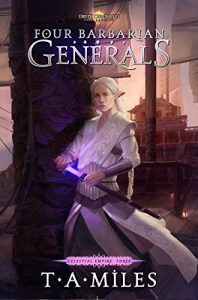 Four Barbarian Generals by T.A. Miles:
Four Barbarian Generals by T.A. Miles:
Han Quan’s dragon has been put to rest. The Empire beholds a moment of peace, a brief hour of victory, though at great cost.
The Imperial City has suffered significant damage from the dragon’s assault, the turmoil between the Five Kingdoms has escalated in the face of a continuing rise of dark forces now attributed as a curse upon the Song Dynasty, and Han Quan himself remains at large. Pursuit of the geomancer uncovers secrets connected to the persisting influence of the late Scholar General, and to the School of the Seven Mystics itself.
While the Phoenix continues to rise through Xu Liang, the dragons of the mortal plane begin to awaken. And as the southern kingdoms unite and rise against Xu Liang and his barbarian allies, the people of Ji continue to look to their ‘Silent Emperor’, some believing that he is favored by the gods, even above the Empress herself.
With Ying threatening to turn away from the Mandate and Du promising to join the southern rebellion, it seems that the heart of the Empire stands alone, unaware that the efforts of the Barbarian Generals will help determine the outcome of this battle between kingdoms.
 War to the Knife by T.S. Paul:
War to the Knife by T.S. Paul:
War is on the horizon for the Galaxy. The Empire of Man has been thrust into civil war as the Cabal makes it’s presence known. Earth is on the rise as plans within plans come to fruition. Mars and the new Alliance intends to take the war to Earth directly and Athena Lee is smack-dab in the middle of it all. Again. Will she survive or will Earth and its clone army win as they reconquer the galaxy?
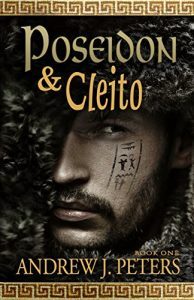 Poseidon and Cleito by Andrew J. Peters:
Poseidon and Cleito by Andrew J. Peters:
He became a god. Her story was forgotten.
From the shore of a frozen steppe, an outcast hunter embarks for the otherworld to ask his ancestors how to bring the mammoth back to the fields of sedge.
In a shining, island kingdom of wonders, the daughter of a high priest fights for her claim to wealth and power after her father is assassinated by the king.
Together they will build an empire recalled as an ancient legend and a cautionary tale. But how did he become a god while she became a mere footnote in history?
From the publisher: Poseidon & Cleito is the engrossing first book of a fantasy trilogy of myth and legend exploring the rise of the lost civilization of Atlantis. In the best traditions of an epic journey, one man’s struggle to discover his place in the world takes him across perilous seas into the epicenter of political strife in a foreign land. But a legend is not made of deeds alone. Fans of Guy Gavriel Kay’s historical fantasy and David Gemmell’s Troy series will enjoy this fantasy novel as it sets out to reimagine the inception of a Greek myth.
Skye Denali promises herself that she’ll never enter The Highlands. But then her sister Bree is taken by a vampire, and her mother is overwhelmed by grief.
She has no choice. To help her family, Skye will have to face her fears. She’ll have to go into The Highlands – a town that’s governed by vampires. And once she crosses the border and leaves the human sector, she’ll lose her rights.
Any vampire can demand her blood and by law she can’t refuse.
She’ll have to avoid attracting attention, search the town, and free her sister. All without getting caught.
Because getting caught means an automatic death sentence, or worse…
 Send to Kindle
Send to Kindle
October 29, 2016
Photos: Bremer Freimarkt 2016
On Wednesday, I took my annual stroll across the Freimarkt, Bremen’s annual autumn fair. The Bremer Freimarkt is one of the oldest fairs in Germany, held every year since 1035 AD, which makes 2016 the 981st reiteration. I’ve blogged about the Bremer Freimarkt a couple of times before – you can find my old posts here.
When I was younger, I used to be a big fan of fairground rides, but most of my favourites are either gone by now (such as the late lamented Frisbee, sold off to Dubai two years ago), while those that are still there tend to be too hard on my back. And three minutes of feeling like Han Solo during the asteroid chase in The Empire Strikes Back isn’t really worth several days of backache.
So this year, I just focussed on the food and enjoyed the atmosphere. I had fish and chips (a fairly new Freimarkt addition that started showing up approx. five years ago to complement the more traditional fish rolls and baked fish), Chinese vegetable stir-fry (first showed up in the late 1980s), sweet potato fries (brand new – this was the first year I saw them), Schmalzkuchen, a doughnut like pastry that is a traditional fairground food and roasted almonds, another traditional fairground treat. My companion’s taste ran more towards the traditional: Thuringian sausage, French fries, Rossbratwurst (horse meat sausage, a regional specialty) and soft serve ice cream.
In general, I noticed fewer stalls selling candy and sweets – used to be that every second stall was a candy stall. It’s probably due to health concerns (fairground candy isn’t exactly healthy even by candy standards) and parents being less willing to buy candy for their kids. I also suspect the Freimarkt allowance, which was standard when I was a kid, is gradually dying out, so kids often don’t have money to buy candy for themselves. Coincidentally, balloon vendors, which were extremely common until a few years ago, have also nearly died out.
Another classic that has become rare is the gingerbread heart, which is decorated with icing spelling out a name or message. They used to be popular gifts for children, girlfriends, etc…, but I saw a lot fewer people wearing a gingerbread heart than usual. I guess people are no longer buying them, for while they make great decorations (I had one on my wall, when I was a student in London, sent to me by friends), they are nigh inedible.
Drink stalls and tents (beer, mulled wine and even hard liquor are normal at German fairs) were plentiful as ever, but thankfully, there were a lot fewer drunks around than usual. Meanwhile, pizza seems to have exploded in popularity. There used to be two pizza stands at the Freimarkt – this year, there were at least six or seven. New additions to the fairground food circuit were langos, a Hungarian specialty. I also saw a stall offering tacos, burritos and other Mexican street food, but it didn’t look very good. Plus, one of the usual fish stalls (fish sandwiches are a North German fairground classic) offered fresh oysters. Now I love oysters, but the Freimarkt is not where I’d eat them. A New Orleans type oyster po’boy I could imagine – po’boys aren’t that different from our traditional fish sandwiches, after all – but not fresh oysters for slurping.
As for rides, there wasn’t anything new this year, just a whole lot of more or less old stand-bys. But then, innovation in mobile fairground rides has slowed down since the early 1990s. Indeed, strolling over the Freimarkt it was striking how many of the rides were already thirty, forty or fifty years old. Ride design wasn’t particularly exciting either, though I question the wisdom of naming your space-themed ride Apollo 13.
One thing that was sorely missed were the barkers who comment on the rides and do their best to entice people to buy a ticket. Most barkers limit themselves to comment like “Come in, a new journey starts.” or “Do you want some more?”, but some are excellent entertainers. The best Freimarkt barker used to work on the rides owned by the Robrahn family, first the Ranger and later the Frisbee. This guy was so hilarious that people would stand in front of a ride they had no intention of boarding just to listen to him. When a power failure plunged part of the Freimarkt into darkness back in the late 1980s, he switched off all lights on the Ranger, while it was upside down, and kept apologising how sorry he was they’d have to stay that way now (no one realised that if the power had really been off, the loudspeakers would have been off as well – at least, I didn’t). Another year, when a couple of Canadian tourists were riding on the Frisbee, he played the Canadian anthem for them. But the Frisbee is now spinning in Dubai and the barker? I have no idea what happened to him, but I miss him.
Another thing that annoyed me was how many rides and stalls were Bavarian themed. Now there have always been some Bavarian themed rides and stall at the Freimarkt, but this year it was really excessive and it doesn’t fit here culturally. I suspect a lot of stall and ride operators couldn’t be bothered to switch out the backgrounds and decor after Oktoberfest – cause most stalls and mobile rides have multiple background and decorations, Bavarian themed for Oktoberfest, maritime themed for Freimarkt and Hamburger Dom, Christmas themed for Christmas markets, etc…
Meanwhile, one classic ride I was happy to see again at the Freimarkt after a few years of absence was a mobile go-kart race track. I suspect it dates from the 1950s and indeed my Dad claims that he rode it as a teenager. The ride is still in excellent condition (fairground rides are subjected to frequent safety checks in Germany, so accidents are very rare). It was massively popular, both among elderly gentlemen eager to relive their youth and teenaged boys (and yes, they were all men. I don’t think I’ve ever seen a woman or girl on the go-kart ride). The teen boys were a joy to behold – one look at their faces and you could see that they were imagining being Michael Schumacher or Sebastian Vettel at that moment. One kid even had its own cheering squad made up of mother, sister and little brother. Two other boys hugged and posed for a photo after the race was through. So cute.
There was more police and more paramedics in evidence than usual and the layout had been changed to reduce the number of exits. Security concerns are heightened this year due to terrorist fears, even though the only terrorist attack ever at a German fair and coincidentally the worst terrorist attack in postwar Germany, the Oktoberfest bombing of 1980, was committed by Neo-Nazis. And believe me, they weren’t afraid of Neo-Nazis this year. Whereas the people they were afraid of were enjoying the fair like everybody else.
I didn’t take my camera to the Freimarkt – too risky, because it’s a pickpocket hotspot. However, by now I have a smartphone which takes pretty decent photos, so I made use of that. You can find my Freimarkt photos below.
If you prefer moving pictures, here is a video documentary of the 2016 Freimarkt. I also found these two Freimarkt videos from 1987 and 1989, featuring many late lamented classics such as the Rainbow, the Sky Lab or the Alte Liebe. The 1989 video features the infamously noisy Sky-Rider (the hydraulics were so noisy that even the music couldn’t drown them out), while the 1987 video also features the Ranger barker – damn, I miss him. The Ranger itself is actually not nearly as much of a test of bravery as my teen self thought – I had the chance to ride one a few years ago. Never got to ride a Sky Lab or Enterprise (same ride, different names) sadly.

A look across the Freimarkt with the Ferris wheel in the background and a jewellery stall as well as a tin can throwing stall in the foreground.

Another looks across the freimarkt with the Ferris wheel in the background and a poffertjes (little Dutch pancakes) stall and a kiddie ride in the foreground.

A look up the Ferris wheel from underneath the awning of another stall: This is the so-called Steiger Ferris wheel. It’s about 60 meters tall, used to be the biggest mobile Ferris wheel in the world and was built by Kocks in Bremen in 1980.

A Freimarkt panorama featuring a Zierer wave-swinger in full flight. The sign in front says “Roasted chestnuts”.

The striking Alex Airport ride seen through some trees.

A look up the Alex Airport ride, really a Funtime Star Flyer.

This log flume ride at the Freimarkt is decorated with totem poles and other Native American imagery. Old West and general travel imagery is common for ride decorations in Germany.

The Olympia rollercoaster and its five loopings at the Freimarkt. In the background you can see the Ferris wheel again.

A closer look at the Olympia Coaster and its five loopings. Built by Anton Schwarzkopf, invetor of the rollercoaster looping, in the 1980s.

The other rollarcoaster at the Freimarkt is the Wilde Mouse, seen here in the background. The Wilde Mouse is infamous for making very sharp turns, which give the impression the car is about to derail.

A closer look at the Wilde Mouse coaster: This modern version dates from the 1990s, has steel tracks and was probably built by Mack Rides. The older version, common in the 1950s and 1960s, was made from wood. I rode a wooden Wilde Mouse once in the early 1990s. It was interesting.

The pirate pyramid, a drinks stall with a pirate theme, with the Wilde Mouse coaster in the background. Come Christmas time, the pirates are swapped out for angels and nativity scenes.

Most food and drink stall at the Freimarkt are fairly plain, but some feature interesting designs. This lighthouse is really a fried fish stall.

And another interesting stall design. This windmill is really a drinks stall.

The Haunted Mansion, a spectacularly designed ghost ride.

The Haunted Mansion again, this time drenched in pink light.

A view across the dry ice fog drenched floor of a bumper car ride.

A glittering and newly refurbished Music Express ride, probably from Mack rides. It sure looks great, though I miss the vintage late 1960 design of the old Music Express. As a student, my Dad used to work as a chip collector at the Music Express predecessor Caterpillar.
Traditional Caterpillar rides, once popular because couples could kiss when the canopy came down, still show up on German fairs occasionally. Here is a video of a beautifully preserved Caterpillar ride from the 1930s.

The Commander is one of the prettiest rides on the Freimarkt. Built by Mondial in the early 1990s and decorated with scenes from Dave Stevens’ Rocketeer by a Brinkum based design firm. The owner reportedly is a huge Rocketeer fan.

The Happy Traveller, a Huss Break Dancer with a stunning world travel theme. Still as great as it was when it premiered at the Freimarkt thirty years ago.

The Happy Sailor ride, built in 1979 and still a Freimarkt favourite.
For a look at the Happy Sailor in holiday dress at the Bremen Christmas market, see here.

The Polyp, a Schwarzkopf Monster III built in 1979. Colloquially called the Kraken, a Monster III has been found at every Freimarkt since 1979. I rode the Kraken and the Happy Sailor most years, too.
Back in 2011, The Kraken, a Schwarzkopf Monster III that had been fairly recently refurbished, suffered an accident at the Freimarkt, which injured a couple fo people. I blogged about that here and here. I was always a big Kraken fan, all the way back since 1979, so I’m glad to see a Schwarzkopf Monster III at the Freimarkt again, even though it’s not The Kraken.
 Send to Kindle
Send to Kindle
October 20, 2016
Free Halloween themed anthology “Monster Maelstrom” available
Yes, I have another new release announcement to make. I promise that eventually there will be regular blogposts again, but at the moment, the new releases are coming hard and fast, so please bear with me.
Today, I am pleased to announce Monster Maelstrom, a Halloween themed flash fiction anthology edited by George Donelly. There are 24 stories about monsters in this anthology, including one of mine.
Monster Maelstrom – A Halloween Anthology From a Hillary Clinton stripper to mythical beast-women in the harsh Scandinavian tundra and from an unusual band of steadfast teddy bears to the last man in zombie-occupied Chicago, fill your briefest moments with pulse-pounding frights and off-beat chuckles with this collection of 24 flash fiction stories.
From a Hillary Clinton stripper to mythical beast-women in the harsh Scandinavian tundra and from an unusual band of steadfast teddy bears to the last man in zombie-occupied Chicago, fill your briefest moments with pulse-pounding frights and off-beat chuckles with this collection of 24 flash fiction stories.
Commuting to work? Grabbing a quick coffee? Each story tells a complete tale in but a few short minutes with the added promise of a lifelong introduction to new indie writers.
You never know, you might just find your next favorite author.
Monster Maelstrom, the second anthology in the Flash Flood series, is a hand-picked selection of master works in humor, horror and fantasy themed for Halloween and guaranteed to keep you engaged.
Best of all, it’s free, so grab your copy now at the retailer of your choice:
Get it at Amazon US, Amazon UK, Amazon Germany, Amazon France, Amazon Netherlands, Amazon Spain, Amazon Italy, Amazon Canada, Amazon Australia, Amazon Brazil, Amazon Japan, Amazon India, Amazon Mexico, Kobo, Barnes & Noble, Apple iTunes, Smashwords and Google Play.
***
Our editor George Donnelly blogs a bit about the anthology here. Monster Maelstrom is part of a whole series of flash fiction anthologies and you can find out how to get the first volume, Bite-Sized Stories, and the next one, Christmas in the Family, for free at George’s blog.
My story in Monster Maelstrom is called “The Reanimated Reunion Tour” and is another story to come out of the 2016 July short story challenge. It’s a comedy horror story about a group of zombie opera singers, The Undead Tenors, post-humously reunited for one final performance.
Like many other stories to come out of the July short story challenge, “The Reanimated Reunion Tour” was inspired by a piece of fantasy art, namely this one.
However, “The Reanimated Reunion Tour” also draws on the love for opera I developed as a teenager. Because the five Undead Tenors (only three of whom are actually tenors, the other two are a baritone and a basso) were once the greatest opera stars of their time, they played all the great parts in all the big houses and festivals and they sure as hell won’t let anybody forget that. Resemblances to any actual opera singers living, dead or undead are entirely coincidental, of course.
I even managed to sneak in a reference to my all-time favourite opera aria, “Oh, wie will ich triumphieren” from The Abduction from the Seraglio by Wolfgang Amadeus Mozart with lyrics by Christoph Friedrich Bretzner. You can see and hear it here, performed by the master himself, Kurt Moll (sorry, Anselmo).
However, my little quirky tale of zombie opera singers is only one of 24 stories about some common and very uncommon monsters to be found in Monster Maelstrom.
Oh yes, and did I mention that the anthology is free?
So what are you waiting for? Grab your copy today.
 Send to Kindle
Send to Kindle
October 16, 2016
“Bullet Holes” and the Creativity Pressure Cooker
Lately, I’ve been writing quite a bit about the 2016 July short story challenge, a writing challenge where the objective was to write a short story every day in July 2016. I’ve written a bit more about the July short story challenge over at the Pegasus Pulp blog – and yes, it is absolutely possible to do this.
One of the most interesting effects of doing something like the July short story challenge is that it get the stewpot of your subconscious working overtime and acts like a pressure cooker for your creativity. This becomes particularly apparent later in the challenge, when all the “easy ideas” have been used up, but you still have to produce a story, so your mind starts to combine all sorts of different influences in new and fascinating ways.
I’d like to illustrate how this works, using Bullet Holes, a science fiction story in the In Love and War series, as an example:
When you’re trying to write 31 short stories in as many days, you need to use writing prompts to spark ideas. I used all sorts of prompts for the July short story challenge, but one method that usually got results for me was using images as prompts. So among other sources, I perused io9‘s list of concept art writing prompts. I looked through the images and if one sparked an idea, I’d start writing.
This is the fairly straightforward version of the idea generation process. See image, start writing. However, sometimes an image would also sink into a great stewpot of my subconscious and spark an idea further down the line. This is what happened in the case of Bullet Holes.
The story was written fairly late in the challenge. It was July, a hot night and even hotter day, and I was trying to fall asleep. But the heat made it difficult and so I drifted in and out of sleep, while my mind was hard at work combining story ideas.
Now I had been writing a short story per day for almost a month at this point, so my brain was in story generation mode anyway. What is more, two of the stories I had written plus one I set aside (which later became Graveyard Shift) had been in the same series, the In Love and War space opera/science fiction romance series, so Anjali and Mikhail were also pretty close to the surface of my mind.
The 2016 Hugo votes also happened to be due by July 31, so I did part of my Hugo reading during the challenge period and had in fact just filled out my Hugo ballot. And while I was drifting in and out of sleep, my mind was fishing for story ideas, mentally reviewing the concept art writing prompts again and also thinking about the Hugo nominees and the way I’d ranked them.
For some reason, I found myself thinking about one particular story, Slow Bullets by Alastair Reynolds, a nominee in the novella category. At the start of that story, the protagonist is tortured with a so-called “slow bullet”, a projectile/data chip which slowly bores its way through her body. Now the “slow bullet” idea isn’t exactly new – I’ve come three variations in the past year or so – and the novella eventually went off into a completely different direction. Nor was Slow Bullets the top-ranked story on my novella ballot – I think I ranked it at number 3. Nonetheless, the opening scene stuck with me and so I found myself thinking about it, while drifting in and out of sleep.
Meanwhile, my mind in its infinite wisdom dug up an image I had seen among io9‘s concept art writing prompts, namely this one of a very dodgy Cyberpunk clinic/treatment room. Once again, this image did not speak to me immediately. In fact I initially dismissed with “Uhm, nope, next one please” after a quick glance. I didn’t even bookmark the image and had to hunt it down again. Nonetheless, my brain remembered it and combined it with the smart bullets from the Alastair Reynolds story and came up with an idea about someone hit in the leg with a smart bullet that was slowly boring its way towards their heart. And the only hope to remove the bullet lay in a dodgy backalley cyber-clinic.
While I was drifting in and out of sleep, my mind mused over the idea and eventually it hit me that this would make a great In Love and War story. Once I had that realisation, I was instantly a lot more awake. I worked over the idea, while lying awake in bed, and came up with a basic plot. Then I got up, switched on the air-conditioning (because I needed to work, damn it), sat down at my computer and wrote the story pretty much straight through with only a handful breaks to make tea and eventually lunch (because writing always makes me hungry).
Bullet Holes is the fourth story in the In Love and War series to date (you can get all four at a reduced price in this neat bundle available exclusively at DriveThruFiction, by the way) and the second to feature Anjali and Mikhail having adventures as an established couple.
In addition to Anjali and Mikhail as well as the new characters Draco and Sladjana Dragovich (Sladjana was named for a teacher colleague of mine, by the way), we also meet (well, hear, since he only appears as a voice in Mikhail’s ear) Colonel Brian Mayhew of the Republican Special Commando Forces, Mikhail’s former commander and mentor, again, who also appears in Dreaming of the Stars and Graveyard Shift.
When I first came up with the idea for what would eventually become the In Love and War series, Mayhew was something of a one-note villain, an SF-nal version of the doggedly relentless pursuer so common in “troubled difter solves problem of the week and moves on” TV-shows such as The Fugitive, The Pretender and the 1970s version of The Incredible Hulk (and indeed, such TV-shows were an influence on the In Love and War series).
However, as I wrote more stories in the In Love and War series, something odd happened, namely Brian Mayhew flat out refused to cooperate and made it very clear that he did not want to be a one-note villain or even a villain at all. And so Mayhew became an a lot more complex character, which thoroughly messed up some of my plans, but also made the overall storyline so much better.
The version of Brian Mayhew seen or rather heard in Bullet Holes is about as close to my original conception of the character, as he is likely to get. Because in Bullet Holes, he needed to be a fairly one-note villain, though even here it becomes noticeable that Mayhew isn’t entirely happy with all the things he’s forced to do in the name of the Republic.
But enough blathering about the writing process. Let’s get to the story itself (yes, this is a new release announcement, albeit one with a little bit of extra added) and follow Mikhail and Anjali onto the streets of the rim world of Varishka, as they deal with some very lethal…
Bullet Holes Once, Anjali Patel and Mikhail Grikov were soldiers on opposing sides of an intergalactic war. They met, fell in love and decided to go on the run together.
Once, Anjali Patel and Mikhail Grikov were soldiers on opposing sides of an intergalactic war. They met, fell in love and decided to go on the run together.
Now Anjali and Mikhail are trying to eek out a living on the independent worlds of the galactic rim, while attempting to stay under the radar of those pursuing them.
When a seemingly routine courier job turns out to be a trap, Anjali is hit by a so-called smart bullet, a Republican weapon that slowly and inevitably kills its victims. Mikhail is given a choice by his former commander Brian Mayhew: Surrender or watch the woman he loves die in excruciating pain.
It is a choice between two equally horrifying fates. But maybe, there is a third option…
More information.
Length: 6200 words
List price: 0.99 USD, EUR or GBP
Buy it at Amazon US, Amazon UK, Amazon Germany, Amazon France, Amazon Netherlands, Amazon Spain, Amazon Italy, Amazon Canada, Amazon Australia, Amazon Brazil, Amazon Japan, Amazon India, Amazon Mexico, Kobo, Barnes & Noble, Apple iTunes, Scribd, Smashwords, Inktera, txtr, Thalia, Weltbild, Hugendubel, Buecher.de, DriveThruFiction, OmniLit/AllRomance e-books, Casa del Libro, e-Sentral, 24symbols and XinXii.
 Send to Kindle
Send to Kindle
September 29, 2016
Indie Speculative Fiction of the Month for September 2016
 It’s that time of the month again, time for “Indie Speculative Fiction of the Month”.
It’s that time of the month again, time for “Indie Speculative Fiction of the Month”.
So what is “Indie Speculative Fiction of the Month”? It’s a round-up of speculative fiction by indie authors newly published this month, though some July books I missed the last time around snuck in as well. The books are arranged in alphabetical order by author. So far, most links only go to Amazon.com, though I may add other retailers for future editions.
Once again, we have new releases covering the whole broad spectrum of speculative fiction. We have a whole lot of space opera this month, but also epic fantasy, urban fantasy, portal fantasy, military science fiction, dystopian science fiction, science fiction romance, time travel, vampires, witches, demons, dragons, aliens, nanitechnology, starship mages, disasters in space, intergalactic mercenaries, turncoat princes, outlaw swordfighters, FBI witches, psychedelic coffee and much more.
Don’t forget that Indie Speculative Fiction of the Month is also crossposted to the Speculative Fiction Showcase, a group blog run by Jessica Rydill and myself, which features new release spotlights, guest posts, interviews and link round-ups regarding all things speculative fiction several times per week.
As always, I know the authors at least vaguely, but I haven’t read all of the books, so Caveat emptor.
And now on to the books without further ado:
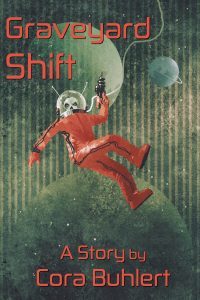 Graveyard Shift by Cora Buhlert
Graveyard Shift by Cora Buhlert
While docked at the civilian space station Unity for repairs, the Republic of United Planets battlecruiser Great Endeavour undertakes a trial flight with an inexperienced bridge crew. Disaster strikes and the Great Endeavour crashes into Unity‘s shopping concourse, killing more than three hundred people.
A tragic accident, but in times of war, the public is not willing to accept tragic accidents. And so the Republic’s government sends its best troubleshooter, Colonel Brian Mayhew of the Republican Special Commando Forces to initiate a cover-up.
This is a novelette of 14100 words or approx. 48 print pages in the In Love and War series, but may be read as a standalone.
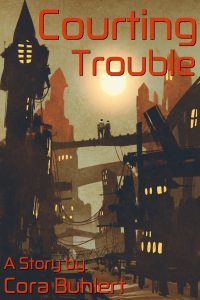 Courting Trouble by Cora Buhlert
Courting Trouble by Cora Buhlert
Once, Anjali Patel and Mikhail Grikov were soldiers on opposing sides of an intergalactic war. They met, fell in love and decided to go on the run together.
Now Anjali and Mikhail are trying to eek out a living on the independent worlds of the galactic rim, while attempting to stay under the radar of those pursuing them.
But when Anjali and Mikhail stumble upon a protection racket during a routine shopping trip, they have to make a choice: Lay low to avoid attracting attention or stay true to their personal ethics and intervene?
This is a story of 6700 words or approx. 23 print pages in the In Love and War series, but may be read as a standalone.
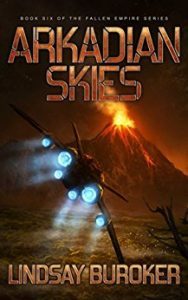 Arkadian Skies by Lindsay Buroker
Arkadian Skies by Lindsay Buroker
With the man who kidnapped her daughter imprisoned aboard her ship, Captain Alisa Marchenko is closer than ever to reuniting her family. But her new guest has been in a coma for weeks, with the secret to her daughter’s location locked away in his mind. She must find a way to sneak him into a state-of-the-art hospital on Arkadius, a planet in the heart of Alliance territory. Not an easy task when she and the cyborg Leonidas, her most trusted ally, are wanted by the Alliance army.
As if that mission weren’t daunting enough, the Staff of Lore has appeared on the planet. As has the man who stole it: Alisa’s father.
Henri Dunn would love to avoid all vampire bullshit for the foreseeable future, but the universe has other plans.
When an exsanguinated corpse is left in the dumpster behind her workplace, Henri knows it’s a some kind of twisted message meant for her. It’s just not one she can decipher.
In addition to that terrifying puzzle, Henri’s new ex-vampire roommate is not adapting well to human life and a Cure-obsessed vampire is stalking her. And of course, her enigmatic vampire sire, Sean, is being his usual elusive and infuriating self.
When a second body that’s been drained of blood is left in front of Henri’s apartment building, it becomes clear that a vicious serial killer is fixated on her. Using her ability to read memories in blood, Henri must figure out who’s behind these terrible killings and stop them before she becomes the next victim.
Bloodless is the second installment of The Henri Dunn Urban Fantasy Series, which features a snarky protagonist, intriguing mysteries, a captivating cast of characters, and elements of humor. Book 1, The Immortality Cure, is also available.
Masoul wasn’t just an uprising, it was the starting of a war. Harmony didn’t start on Masoul; they were using it as a testing ground.
Moretti has a lead on where Harmony might have come from. First they need to defeat Harmony’s forces in Osdal.
Nerva’s not going to throw his people at Harmony, this is not just a colonist uprising, this is a well-armed and backed military. They need more information. It comes down to the Triple-Two’s to find out that information.
Once again the Victor brothers and their platoon will be right at the heart of Harmony.
Nothing will be the same after Osdal.
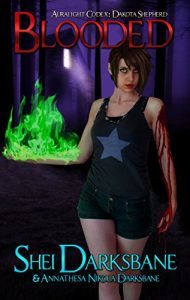 Blooded by Shei and Annathesa Nikola Darksbane
Blooded by Shei and Annathesa Nikola Darksbane
Dakota Shepherd gained Hellfire from a demoness on the day she Awakened. She never asked for that power, but it worked out well…until the deadly fire turned against her, forcing her to strike a deal with her even deadlier benefactor.
A bloody quest. A score unsettled. A lesson finally learned.
Dakota must recover the demoness’ stolen blood before a thief with unparalleled power can turn it to his own dark purposes. Even with her wealthy and powerful girlfriend on her side, Dakota is way out of her league.
But when a demoness calls, only a dead girl says no.
 Repulsive Origins – The Captain by Brian W. Foster
Repulsive Origins – The Captain by Brian W. Foster
When a supervillain attacks civilians, the US Army is first on the scene. Lieutenant Samuel Shields is given the impossible task of protecting lives and property. His weapons won’t hurt a three-story tall enhanced hostile, and even if he could figure out a way to take the enemy out, he’s not allowed to engage under any circumstances. Instead, he must wait for the so-called superheroes to show up.
Leave it to the politicians to create such a FUBAR situation.
Two children are put in danger, and Samuel is forced to make a life-altering decision. If he follows orders, he’ll have the deaths of two kids on his conscience. But if he disobeys, he risks his life and, worse, a court martial.
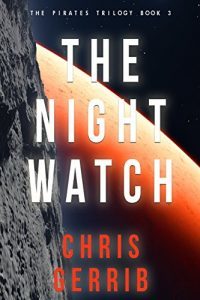 The Night Watch by Chris Gerrib
The Night Watch by Chris Gerrib
In the chaotic and crime-ridden settlement of Boxtown on Mars, Minty Storey witnesses a bar fight she has no idea will change the course of her life.
Halfway across the planet, Janet Pilgrim and the Volunteer Space Rescue Service struggle to do something about the pirate menace on the spaceways between Earth and Mars.
But the problems both face are much bigger than pirates and bar fights. When a leader of Earth’s Manifest Destiny movement makes an appearance on Mars, events begin to roll to a climax that will hold the fate of the planet in the balance.
An impenetrable barrier keeps Earth’s ships from leaving. Teams of specially-trained heroes fly the limited allowed space wiping out the debris specialists suspect offended an alien force. Separated from her lover, Jane treasures her team and performs her duty, but she suspects a lie fuels the international sport. With her friend Julio’s life hanging in the balance, she faces the deadly force penning her planet and battles the hypocrisy of her government.
This is a LGBT short story with lesbian and gay content, and mild swearing.
 True Colors of Betrayal by J.C. Kang
True Colors of Betrayal by J.C. Kang
The world knows Kaiya as the Dragon Charmer.
After vanquishing the Last Dragon with the power of her voice, all she wants is to return to a quiet life of anonymity. Instead, the Emperor assigns her an onerous task: negotiating with the aggressive Teleri Empire for the extradition of her cousin, who tried to murder the imperial family and usurp the Dragon Throne.
The mission reunites her with her childhood friend Tian, now an assassin-spy who loathes killing. He is no longer the adorable, gullible boy from her memories, any more than she is the adventurous, sweet girl from his. Instead of rekindling nostalgia for a youthful innocence they both yearn for, their reunion ignites a mutual hatred.
When the Teleri Empire breaks off negotiations, Tian must help Kaiya escape. Orcs, Ogres, and enemy soldiers stand between them and home, and their volatile relationship could get them captured… or killed.
After escaping the extermination of everyone they loved, Rome and Mae seek revenge.
However, the world outside their city sized prison is too busy to care. They form a desperate friendship with an unlucky Zoo guide, caught in the wrong place at the right time. Together they face the forces of a corrupt government, a sensationalist media, and an apathetic public.
And they only have a week left to live.
Suspenseful, political and awash with colourful characters and epic set pieces.
Stem the sequel to sci-fi hit Pollen, builds to a finale that pits hero against hero.
On the Age of Discovery, a massive cargo hauler, Kasey Lee works as a Custodial Technician, essentially a glorified janitor.
When the Ides, a hostile alien race, attacks Earth’s outposts, the Age must assist in the war effort.
But Kasey discovers that there is a conspiracy on board, one which led the Ides straight to the outposts, and is now pointing them right at Earth.
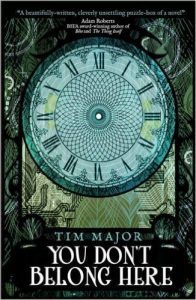 You Don’t Belong Here by Tim Major
You Don’t Belong Here by Tim Major
Daniel Faint is on the run with a stolen time machine. As the house-sitter of a remote Cumbrian mansion, he hopes to hide and experiment with the machine. But is the Manor being watched by locals, his twin brother or even himself? Daniel is terrified about what the future may hold but, as he discovers, there can be no going back.
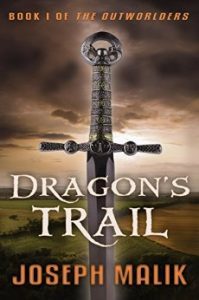 Dragon’s Trail by Joseph Malik
Dragon’s Trail by Joseph Malik
“I didn’t come here to sell my soul. I came here to buy it back.”
Once dubbed “The Deadliest Man Alive,” Jarrod Torrealday is a former Olympic saber hopeful and medieval weapons expert banned from competition for killing another fencer in a duel. Despondent, volatile, alcoholic, yet still one of the greatest swordsmen alive, he now works for third-rate fantasy films as a technical consultant and stuntman.
When Jarrod accepts the gig of a lifetime from a sorcerer looking for a hero, he finds himself facing an invading army in a world inhabited by creatures from Earth’s mythical past. He soon learns that the enemy mastermind is also from Earth, and has laid the foundations for a new kind of war.
 Born a Witch… Drafted by the FBI by T.S. Paul
Born a Witch… Drafted by the FBI by T.S. Paul
Agatha Blackmore came into her powers early as a child. Her first spell was a thing of beauty and wonder. It brought terror into the hearts of her family. Who wanted to accidentally become a pink chicken? Now that she’s older her magic is out of control. She needs a teacher and none of the Witch Schools will take her. How about a career in law enforcement? The FBI needs serious help in catching law breaking Paranormals. It’s a match made in heaven or is it in Hell? God only knows what happens next.
 The Unmasking Engine by Ian W. Sainsbury
The Unmasking Engine by Ian W. Sainsbury
An experiment that began 2.8 billion years ago is about to end…
Seb Varden is starting to get used to life as a World Walker. With a body full of alien nanotechnology, the ability to travel anywhere instantly and – most surprising of all – a steady relationship with Meera Patel, things are finally looking up.
Until Seb has his first blackout, starts meeting aliens and discovers a plan that threatens the entire human race. And, of course, Mason, the most dangerous Manna user, picks this particular moment to come after him and Meera.
Scariest of all, Seb is learning his transformation into a World Walker is far from complete…
Monkeys, aliens, technology, parallel universes, music, psychopaths, A.I., a magic tech spider, The Unmaking Engine has it all, including the explanation of how all life on earth began. Did I mention monkeys?
The Unmaking Engine is book 2 in the The World Walker Series.
 The Turncoat Prince by Amelia Smith
The Turncoat Prince by Amelia Smith
Darna is just a guildswoman, or so she’d like to think, but her alleged father was the prince of a backwater province. Her uncle assassinated him to claim the throne, and now he’s coming after her.
With assassins on her heels, Darna takes on a job in the remote province of Slaradun. The prince is irate to find that this limping woman has replaced the able-bodied man he hired, but according to the contract, he’s stuck with her for the season. Darna finds the prince arrogant and high-handed, but he’s also intelligent and well-read. As winter closes in on Slaradun keep, late night conversations turn from sea walls to more intimate territory, and the province’s lost dragon reappears.
This book is the second in the Dragonsfall trilogy. To enjoy it properly, read The Defenders’ Apprentice first, and perhaps also the beginning of Darna’s story in the prequel novels, Scrapplings and Priestess.
 Phobos Eclipse of the Heart by Colin Spindler
Phobos Eclipse of the Heart by Colin Spindler
Colin Spindler’s CULT Group Coffee Sequence is a mystical space yarn for lovers of psychedelic science fiction.
Phobos Eclipse of the Heart picks up the wild tale where Of Bots and Beans left off.
Follow the mysterious Participant’s continuing misadventures in Sequencing. Learn about The Scullythorne Thesis, an authoritative document which can be twisted into providing support for any and every argumentative perspective. Uncover a nefarious plot to bring down the Dos Boletos facility. Mourn the tragic end of Sir Francis Buildobare and the loss of the Vladimarino Gripebagger Expedition. Puzzle over the controversial Alley Cat Initiative.
Revel in the mysteries of the nanobot-haunted Cosmos!
An alien ruin
A murdered archeologist
An ancient secret—and a conspiracy that will kill to keep it!
When a scientist is murdered after finding signs of alien magic in an archeological dig, Mage Damien Montgomery, Hand of the Mage-King of Mars, is sent to investigate both the murder and the alien runes.
His investigation is interrupted when a mysterious ship attacks the ruins with weapons only available to the Martian Navy. Despite saving the dig site, Montgomery is left with more questions than answers.
His investigations reveal questions about the origin of his magic and his nation—and lead him back to the one place that should be safe: the court of the Mage-King of Mars.
 Send to Kindle
Send to Kindle
Cora Buhlert's Blog
- Cora Buhlert's profile
- 14 followers




